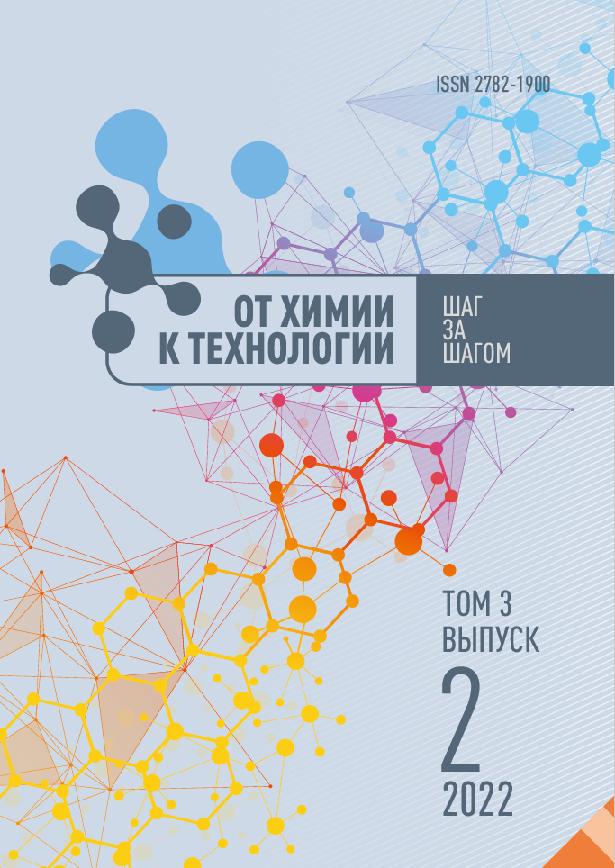Yaroslavl, Yaroslavl, Russian Federation
Yaroslavl, Yaroslavl, Russian Federation
Nowadays, there is an increase in the amount of waste containing heavy metals, which has a negative impact on the environment and humans. This article deals with the process of extracting copper and other valuable components from jewellery waste using magnesium turnings - a waste product of the machine-building industry. This method makes it possible to utilise three different waste products at once, which is economically and ecologically attractive.
jewellery waste, refining, heavy metals, magnesium turnings, pickle liquors
1. Lugovoi, V.P. (2012) Technology of jewellery production. Minsk: Novoye znanie; M.: INFRA-M (in Russian).
2. Datsenko, V.V. & Khobotova, E.B. (2013) Ecological approach to solving the problem of electroplating waste disposal. Ecologiya i promishlennost Rossii, (2), pp. 10-13. DOI:https://doi.org/10.18412/1816-0395-2013-2-10-13 (in Russian).
3. Fedosova, A.A. & Akhlyustin, A.S. (2018) Effective technology for joint recycling of waste brass and spent pickling solutions. Gal'vanotekhnika i obrabotka poverhnosti, 26(1), pp. 16-18. DOI:https://doi.org/10.47188/0869-5326_2018_26_1_16 (in Russian).
4. Kalyukova, E.N., Savinykh, V.V. & Vorontsov, A.O. (2013) Utilization of hydrochloric acid spent pickling solutions containing heavy metal ions. Vestnik SGASU. Gradostroitel'stvo i arhitektura, 4(13), pp. 42-44. DOI:https://doi.org/10.17673/Vestnik.2013.S4.12 (in Russian).
5. Jewellery production [online]. Available at: www.znaytovar.ru/new489.html (accessed on 01.05.2022).
6. Borisov, A.N. Commentary to the Federal Law "On Precious Metals and Precious Stones" of March 26, 1998 No. 41-FZ (article-by-article). [online]. Available at: https://uvelir.info/media/xvn/files/2014/01/29/96866361652e84ead1f559.pdf?ysclid=l4fik0mt7c868790563 (accessed on 01.05.2022).
7. Evdokimova, N.A. & Makarov, V.M. (2005) Utilisation of copper-containing spent pickling solutions. Ecologiya i promishlennost Rossii, (1), pp. 28-29. DOI:https://doi.org/10.18412/1816-0395-2005-1-28-29 (in Russian).
8. Vinnikova, O.S., Lukashov, S.V. & Pashayan, A.A. Method of utilization of spent pickling solutions containing iron(II) sulphates and chlorides. 2428522 RF (in Russian).
9. Poluboyarinov, P.A. (2018) Use of metallic magnesium for neutralisation of copper-containing pickling solutions. Tekhnosfernaya bezopasnost'. Sovremennye realii. Sbornik materialov regional'noj nauchno-prakticheskoj konferencii. Makhachkala, November 21, 2018. Makhachkala: Dagestan State Technical University, pp. 23-25 (in Russian).
10. Andreev, S.Y., Garkina, I.A., Poluboyarinov, P.A. & Knyazev, V.A. (2015) New technology for neutralization of highly concentrated copper-containing spent pickling solutions. Regional'naya arhitektura i stroitel'stvo, 4(25), pp. 102-108 (in Russian).
11. Khranilov, Y.P., Lobanova, L.L., Eremeeva, T.V. & Bobrov, M.N. (2019) Utilization of nickel, chromium and copper from some wastes of electroplating production. Utilizaciya othodov proizvodstva i potrebleniya: innovacionnye podhody i tekhnologii. Materialy Vserossijskoj nauchno-prakticheskoj konferencii s mezhdunarodnym uchastiem. Kirov, 4 December 2019. Kirov: Vyatka State University, pp. 35-39 (in Russian).
12. Filippov, A.A., Pachurin, G.V., Rebrushkin, M.N. & Konyukhova, N.S. (2020) Reduction of complex influence of dangerous and harmful factors in conditions of steel wire production. XXI vek. Tekhnosfernaya bezopasnost', 5(2), pp. 222-232. DOI:https://doi.org/10.21285/2500-1582-2020-2-222-232 (in Russian).
13. Kladnig, W. (1991) Industrielle Oxidrohstoffe - Herstellung nach dem Andritz-Ruthner-Sprührostverfehren. Sprechsaal, 124(11/12).
14. Makarov, V.M. & Frolova, E.A. (2014) Industrial Ecology. Hazardous Waste Management. Yaroslavl: Izd-vo YaGTU (in Russian).
15. Lurie, Yu.Y. & Rybnikova, A.I. (1974) Chemical analysis of industrial wastewater. M.: Khimiya (in Russian).
16. Lurie, Yu.Y. (1984) Analytical Chemistry of Industrial Wastewater. M.: Khimiya (in Russian).







